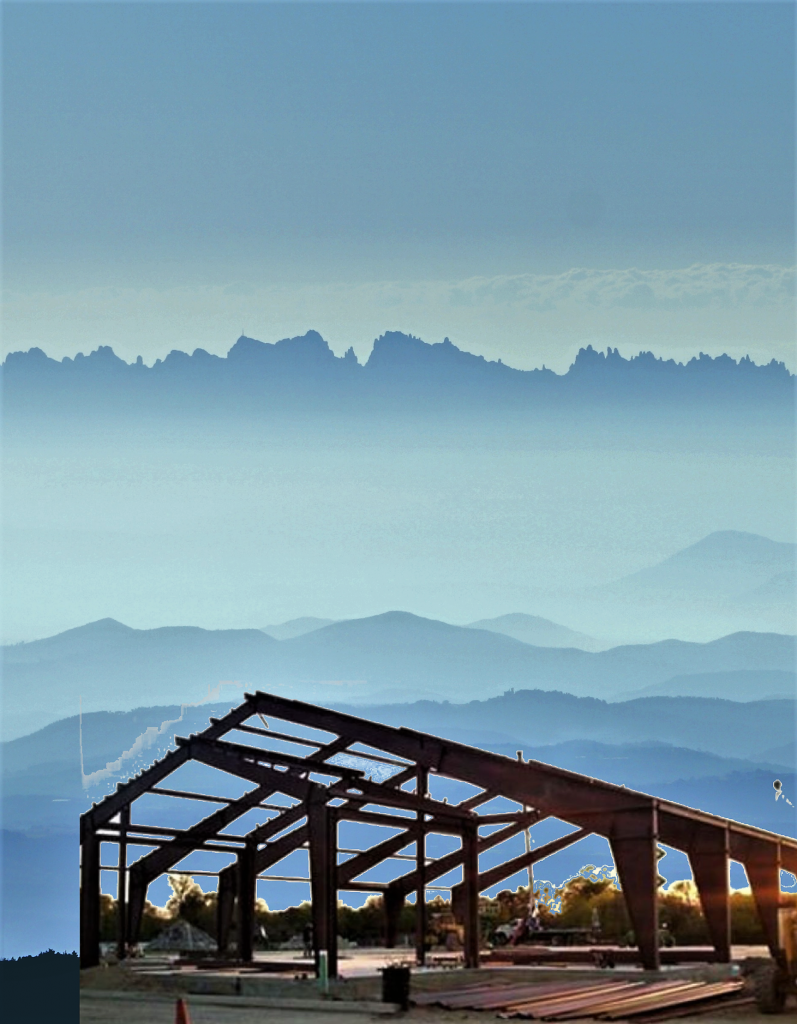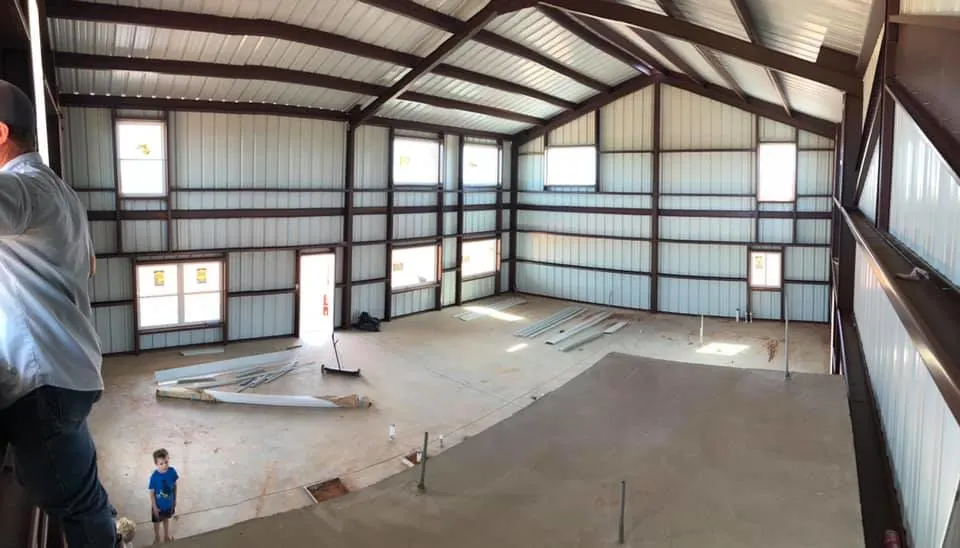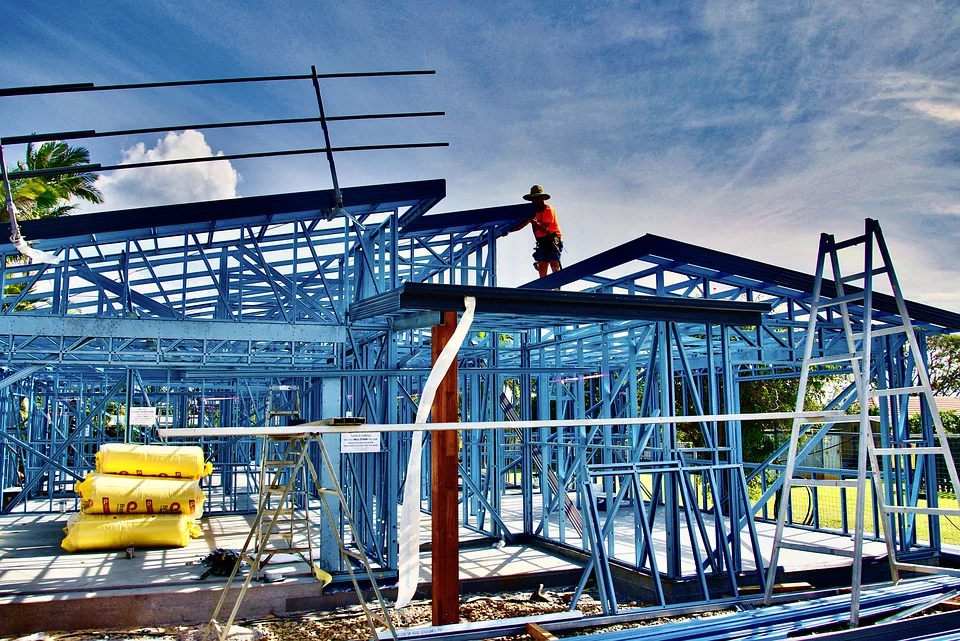Looking to build a steel frame home? Read this blog post to learn about steel frame homes’ pros and cons including durability, fire resistance, and design flexibility, as well as potential drawbacks such as cost and conductivity.

Page Contents
Pros of Steel Frame Homes
Steel frame homes have many advantages over traditional homes, making them a popular choice for those seeking a durable, long-lasting, and environmentally friendly housing option.
Durability and Longevity
Steel is incredibly strong and durable, making it a great choice for homes that need to withstand harsh weather conditions, earthquakes, and other natural disasters. Steel frame homes can last for decades without showing signs of wear and tear.
Steel homes require less maintenance over time than traditional homes, reducing the need for ongoing repairs and replacements that can have an environmental impact.
Fire Resistance
Steel is non-combustible and does not contribute to the spread of fire, making it an excellent choice for homes in wildfire-prone areas.
Resistance to Pests and Insects
Unlike wood, steel is not susceptible to termites, rodents, or other pests and insects that can cause damage to a home.
Environmentally Friendly
Steel is a recyclable material, making it an eco-friendly choice for those concerned about the environment. Steel is a highly recyclable material, and up to 90% of it can be recycled and repurposed. This means that the steel used in a home can be reused in other applications, reducing the need for new steel production and the environmental impact that comes with it.
Faster Construction Time
Steel frame homes can be built faster than traditional homes, as the frame is prefabricated off-site and then assembled on-site. This can help reduce construction time and save on labor costs.
Design Flexibility
Steel frame homes offer a high degree of design flexibility, allowing homeowners to create unique and innovative designs that may not be possible with traditional building materials.

Cons of Steel Frame Homes
Overall, while steel frame homes have many benefits, they also have potential drawbacks that should be carefully considered before deciding to build one.
Cost
Steel frame homes can be more expensive to build than traditional stick-built homes, as the materials and labor costs are often higher. This can make them less accessible to those with a limited budget.
Conductivity
Steel is a good conductor of heat, meaning that it can easily transfer heat or cold from the outside to the inside of the home. This can lead to higher energy bills, as the home may require more heating or cooling to maintain a comfortable temperature.
Rust and Corrosion
While steel is durable, it is also susceptible to rust and corrosion over time, especially in humid or coastal areas. This can weaken the structure of the home and require costly repairs.
Limited Insulation Options
Steel frame homes may have limited insulation options compared to traditional homes, which can affect their energy efficiency and make them more expensive to heat and cool.
Noise Transmission
Steel is a rigid material, which can make it prone to transmitting noise throughout the home. This can be a concern for those who value privacy or live in noisy environments.
Limited Availability of Builders
Finding a builder who is experienced with steel frame homes can be a challenge in some areas, as they require specialized skills and knowledge.
How long will a steel frame house last?

A steel frame house can last for decades, if not centuries, with proper maintenance and care. Steel is an extremely durable material that can withstand harsh weather conditions, earthquakes, and other natural disasters that may damage traditional homes.
The lifespan of a steel frame house largely depends on factors such as the quality of the steel used, the design of the home, and the level of maintenance it receives over time. For example, a steel frame home that is built with high-quality steel and designed to withstand extreme weather conditions may last longer than one that is built with lower-quality steel and lacks sufficient insulation or ventilation.
Proper maintenance can also extend the lifespan of a steel frame house. This includes regular inspections to check for rust or corrosion, proper ventilation to prevent moisture buildup, and prompt repairs to any damage that may occur over time. With the right care and maintenance, a steel frame house can last for many years, making it a wise investment for those looking for a durable and long-lasting housing option.
Is a steel frame house better than a wood?
Both steel frame houses and wood frame houses have their advantages and disadvantages. It ultimately comes down to personal preferences, budget, and environmental conditions. It’s important to carefully consider all the factors before deciding which option is best for you.
Steel frame homes have many benefits, including durability, resistance to pests and weather, lower maintenance costs, and design flexibility. They can also be environmentally friendly and energy-efficient. However, steel frame homes also have potential drawbacks, such as higher construction costs, conductivity, rust and corrosion, limited insulation options, noise transmission, and limited availability of builders. Ultimately, the decision to build a steel frame home should be based on careful consideration of the pros and cons, as well as personal preferences and budget. With the right planning, construction, and maintenance, a steel frame home can provide a long-lasting and innovative housing option.
If you would like more guides like this one, check out the rest of BarndominiumLife.com. There, you will find more helpful tips and tricks from the pros. You will also find featured barndominiums, barndominium floor plans, and information on financing and insurance. Knowing as much as you can will help you get the best results for your dream home.
